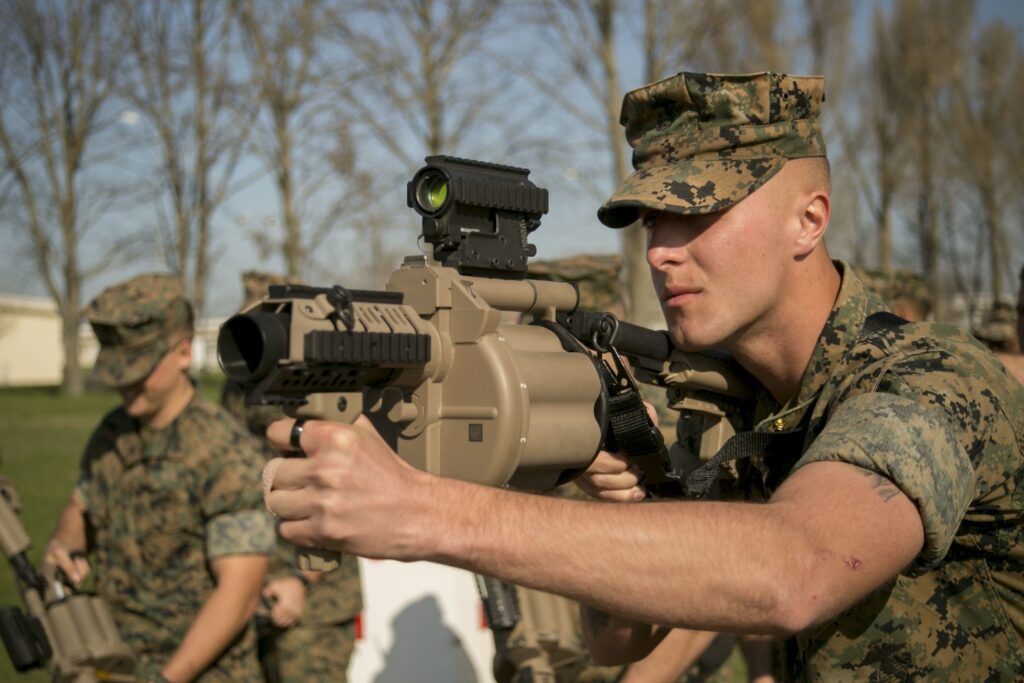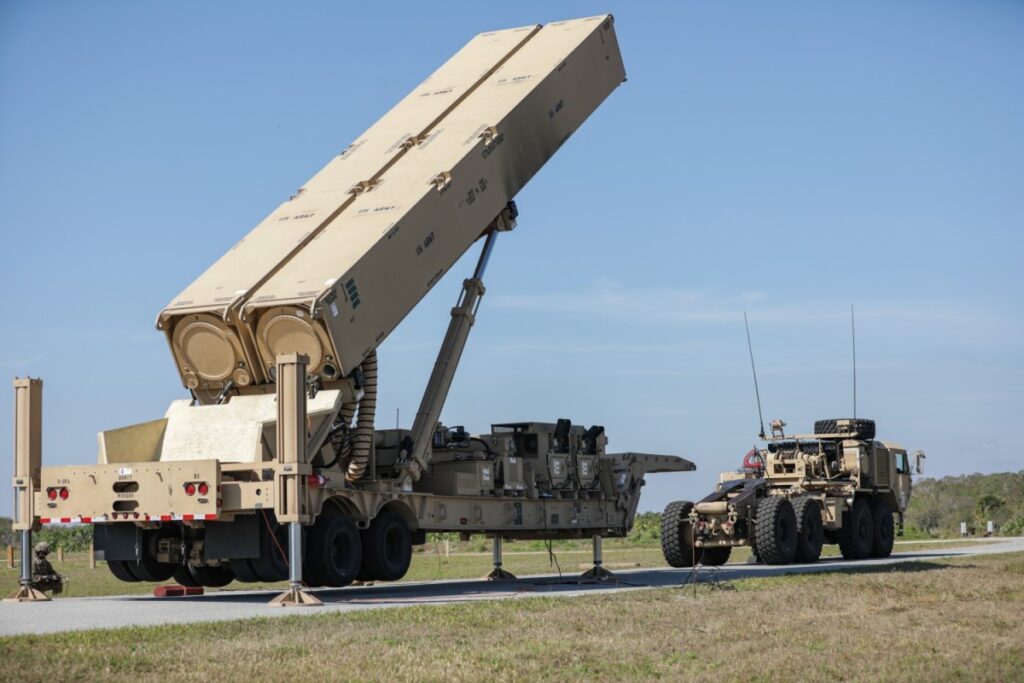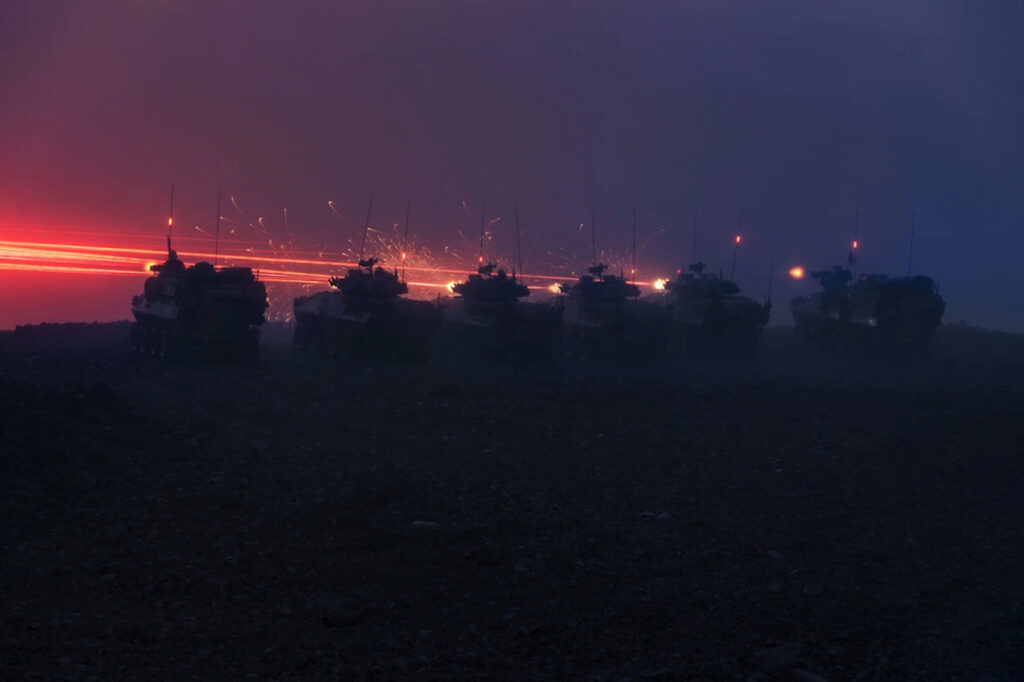God, I love grenade launchers. Hearing that distinctive bloop and the following explosion was always something that made me smile… and gave me a security blanket-like feeling in a firefight. Our squad had two grenadiers, and of the two, we had one that was a savant with a grenade launcher. It was an extension of himself, and he could lay down hate rapidly. With that in mind, you might think he was carrying the Marine Corps M32 or M32A1 multiple grenade launcher.
But in reality, he carried the standard M203 attached to the bottom of his M4 rifle. This wasn’t because we didn’t have M32s: Our company had a few and fielded them with other squads. Instead, when our savant grenadier was offered an M32, he politely declined, preferring his M203 to the six-shot, multiple-grenade-launching M32.

The Marine Corps and SOCOM adopted the M32 in the early 2000s. The Marine Corps was the only conventional force to adopt the weapon, and the decision came from a meeting of Marine Corps gunners, aka infantry warrant officers. Their goal was to find a means to increase the rate of fire of 40mm grenades, and they settled on the Milkor MGL, which became the M32 and later the M32A1.
Related: A deep look at the SIG Rattler, SOCOM’s new personal defense weapon
Inside the M32
The M32 and M32A1 are slightly different. They are both six-shot, multiple-grenade launchers that use a rotating series of cylinders like a revolver. The M32 is the original model and features a 12-inch barrel; the M32A1 features an eight-inch barrel. Even with the shorter barrel, the M32A1 weighs the same as the M32. This was due to the M32A1 being strengthened to accept the medium velocity 40mm grenades SOCOM was shopping for.
Both of these grenade launchers can handle all standard and conventional 40mm low-velocity grenades and the M32A1 can also handle medium velocity rounds. These include old favorites like high explosive, high explosive dual purpose, smoke, flares, and even less-lethal loads like rubber batons, buckshot, and CS loads.
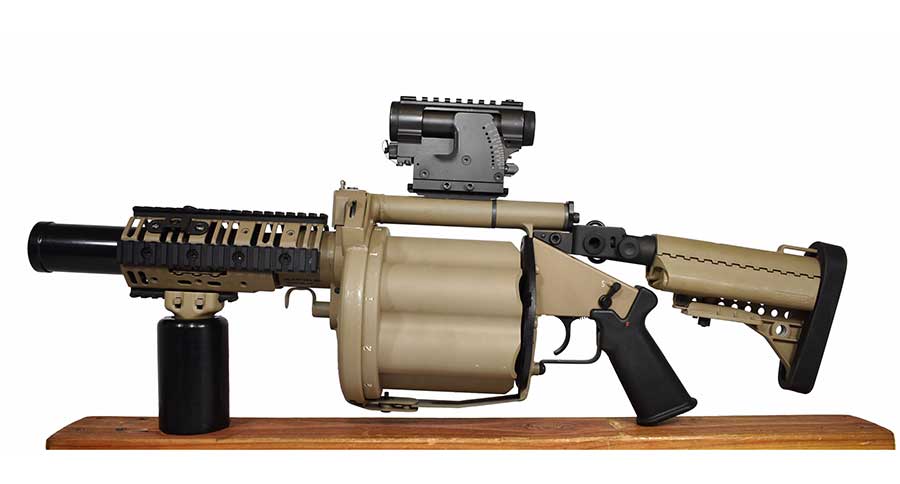
The very modern M32 features an accessory rail for a red dot which the Marine Corps adopted. This red dot, the M2A1, designed by Aimpoint, sits on a unique mounting system, as the high arc of the grenades it fires requires a special sight system. Therefore, this red dot’s mount could be adjusted to match the arc of a grenade at longer ranges. It’s fairly effective and easy to use in my experience.
The trigger is a double-action one, much like a revolver: With every trigger pull, the weapon fires. This allows for a rapid dispersion of six 40mm grenades. And with the red dot on top, you could lay down some rapid-fire hate.
Related: This is the fascinating history of grenadiers, a centuries-old elite unit
Why the single-shot grenade launcher still rules
The Marine Corps has had M32s for over a decade, and the infantry still carries a mix of M203s and M320 grenade launchers. Both of these are single-shot weapons. The M32 is a commander’s discretion weapon, meaning it can be equipped by troops, but is not required to be. With the rate of fire increase, it seems odd that the M32 doesn’t offer enough potential to arm at least one rifle squad member.
The truth is the M32 might offer more firepower than the M203 or M320 for the first six rounds, but it gets a lot slower after that. As my team leader and savant grenadier said, “With the M203, I can fire 10 rounds faster than the M32 can fire seven.” This is because the downside of the M32 comes from when it needs to be reloaded.
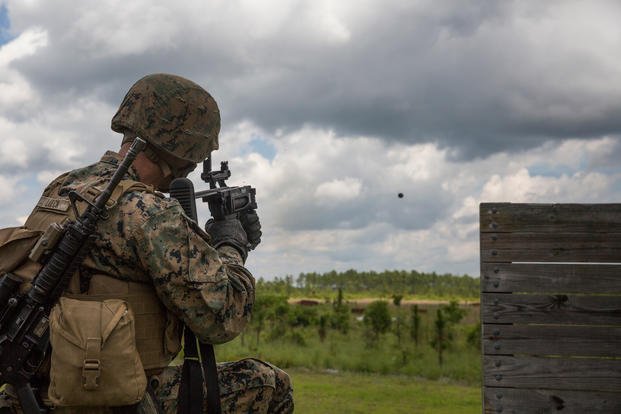
The empty cases typically fall out, but the user has to pry them free when they don’t. Then they must retrieve one grenade at a time and load the cylinders. The cylinder must be manually twisted before closing the action and resuming fire. It’s a fairly slow process.
Yet, there is a good argument to be had in how often do you need to fire more than six grenades?
Well, we did, all the time, and our grenadiers began slowly reducing their load-outs to increase the number of grenades carried versus rifle ammo and other tools.
Beyond just being slow
The M32 is slow to reload, but it’s also hefty. When fully loaded, it weighs 18.5 pounds. That’s more than a light machine gun. Not only does the user have to carry a nearly 19-pound weapon, but they also have to carry an additional weapon for encounters where a grenade isn’t appropriate. Typically that means a handgun, but the Marine Corps is really stingy with their handguns, so it’s likely an M32 grenadier will still be carrying a rifle.

The M32 certainly has a role in which it excels. For less lethal munitions, it’s pretty solid, and 40mm less-lethal ammo is typically more effective than 12 gauge. I can also see it being valuable in an environment like Iraq, where roads and trucks allow it to stay in the truck until needed. In force protection and on the defense, it would be a solid choice to stop the momentum of attacking troops and quickly disbursing flares so defenders could spot night attackers.

Yet, for now, the single-shot grenade launcher still offers the most efficient option for an on-foot infantry force. Repeating grenade launchers certainly have a future, but we might need smaller grenades or magazine-fed options first. Until the OICW arises from the grave, I think the single-shot grenade launcher will dominate.
Read more from Sandboxx News
- The M16A2 – Why the Marines’ rifle wasn’t that great
- Yes, WWII soldiers could throw mortar rounds like grenades
- MQ-9B STOL: A new Reaper cousin could help Marines win the Pacific
- Watch: How the Ukrainians are trolling the Russian military with the M142 HIMARS
- Machine guns have the Marines to thank for their role in warfare
